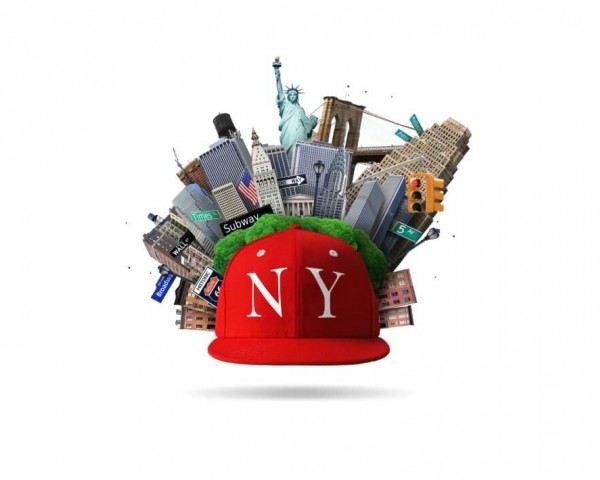NYC tourism numbers show a significant decline
New York City, they say it never sleeps, but lately it seems to be sleeping a bit. The steel and neon craze hasn’t completely died down, but the sound has definitely quieted down a bit. Remember how in 2024, 13 million international visitors took to the streets, imbuing them with vibrant, post-pandemic energy? Well, as the leaves fall and the weather turns chilly in October 2025, something is different.
Tour buses aren’t nearly as full, Broadway houses a few more empty seats, and forecasts…well, they point to a potentially worrying 17% drop in foreign arrivals for the year. A drop in tourist numbers not seen since the 08 crash. what gives It seems that rising costs, trade friction, and perhaps a slightly diminished global image under President Trump’s watch have hurt the Big Apple’s sentiment a bit… Experts are throwing around words like “hemorrhage,” suggesting a potential loss of $4 billion to the economy. Still, as always, New York City is looking forward to the 2026 FIFA World Cup and is betting big on bringing people back.
A city that feels sluggish
the streets remarkably quiet. Remember those famous red double-decker buses, filled with selfie sticks and people from everywhere? Now you might see a few more locals or just a few tourists making the most of it. Even Times Square, a wild mix of advertising and people, operates at low volume. The lights are still bright, sure, but the footfall is definitely down. By 2024, the total audience reached about 67 million people. Cut to 2025, though, and the projections look more ambitious: 64.1 million is the new estimate. And when you zero in on international visitors — those who actually spend that much money, like two grand on a trip or more — the number of tourists drops to 12.1 million, 17% lower than the initial estimate.
Tariffs, tensions, and a blackened star-white banner
The problems are not local. Figures are falling across the country. International arrivals to the United States may drop from 72.4 million in 2024 to 67.9 million this year, which could mean job losses from Hawaii to New York. Little boys feel the burn. Javier Ruiz, who has long run a coffee cart near the Flatiron, said simply: “Trump’s taxes have raised prices. Anyone who imports goods, they pay more.” He pointed to his coffee pot. Last year, you could get your caffeine fix for $3, but now it’s $5 — which might not be much, but it adds up, and budget travelers beware. This is a small example of a larger issue: daily costs are increased by 25% by import taxes. Suddenly, New York isn’t as cheap as it used to be, and tourists are having second thoughts.
To really get to the heart of the matter, you have to zoom in a bit. Inflation is already a headache, but it is actually made worse by these trade wars. Adding an extra 10-20% to the cost of European wines or Asian appliances makes everything from hotel rooms to restaurant meals more expensive. Spending by visitors from major markets is starting to decline: once a major spender, Canada has fallen to tenth place, leading to a loss of $200 million, and France and the UK are on the same road. However, it’s not just money; feelings
According to Gail Morse, who has been a volunteer guide with the Big Apple Graters for years, “There’s a little enthusiasm.” She noted that travel demand fell 26% in the first half of 2025 compared to the same period in 2024—with a 39% bigger dip from Europeans alone. There is a 2008 feel to it; Economic slowdown keeps visitors at home. Now, it’s also social media posts; Calling allies freeloaders, rolling back the travel ban, and extending visa wait times to 400 days for some, all create invisible obstacles. TUI, one of Europe’s biggest travel companies, says US-EU tensions and tighter border controls are making people suspicious, cutting transatlantic bookings by nearly 5%. As a Berlin blogger put it in a thread that got a lot of attention, “Why go to a place where it looks like they don’t want you?” From ‘welcome’ to a kind of ‘welcome-response’, the results are remarkable. Projections suggest a $29 billion loss to tourism nationally, with New York potentially losing as much as $6 billion. The loss is unfolding across various sectors, affecting nearly 400,000 jobs in hotels, theaters and even taxi services. Oxford Economics March data previously indicated domestic travel was 15% behind estimates, a trend experts worry will continue without policy changes.
World Cup wildcard and international charm offensive
However, New Yorkers have a knack for reinventing themselves. As winter 2025 approaches, bringing a potential slowdown, the city is planning its revival around the 2026 FIFA World Cup. The month-long international event will see key matches, including the knockout stages, hosted at MetLife Stadium in nearby East Rutherford. Forecasts predict a $3.3 billion boost to the NY-NJ economy: half a million visitors, ten thousand new jobs, as well as continued improvements to transit and fan areas. Airbnb’s commitment of $1 million to the Community Fund, and mayoral candidate Zahran Mamdani’s bid for the “International Jam Czar” highlight the importance of this event in a huge success.
In addition to the soccer excitement, NYC Tourism + Convention recently introduced “Where the World Comes to Play”—a multilingual marketing campaign spanning 20 countries, from Tokyo to Toronto. It combines World Cup excitement with perennial attractions such as hidden speakeasies and impressive city views. The $50 million campaign aims to attract Europeans with faster visa processes and customs-free travel packages, while also targeting the growing middle class in Asia. Official guides already map out fan zones at Bryant Park and shuttle routes from JFK for match days, effectively positioning the Cup as an opportunity to rebuild the city’s image.
Will Apple bite back? A tale of two tomorrows
As 2025 rolls around, New York faces a critical juncture: either succumb to feelings of isolation and experience a steady decline in tourism, or capitalize on the global appeal of the World Cup to regain global prominence. Economic realities are stark—a 25% drop in international visitors could put 100,000 jobs at risk– But the spirit of the city remains strong. From people like Morse, who continue to show the city’s essence amid the statistics, to local businesses that are making a splash one cup at a time, the Big Apple continues to thrive.
Historically, New York has shown considerable interest. After 9/11, it bounced back from destruction to achieve record numbers; After the 2008 crisis, it moved towards economic stagnation. The 2026 World Cup could mark the beginning of a new era. Until then, visitors may find the city quieter than usual, but the dream is still alive.




Post Comment